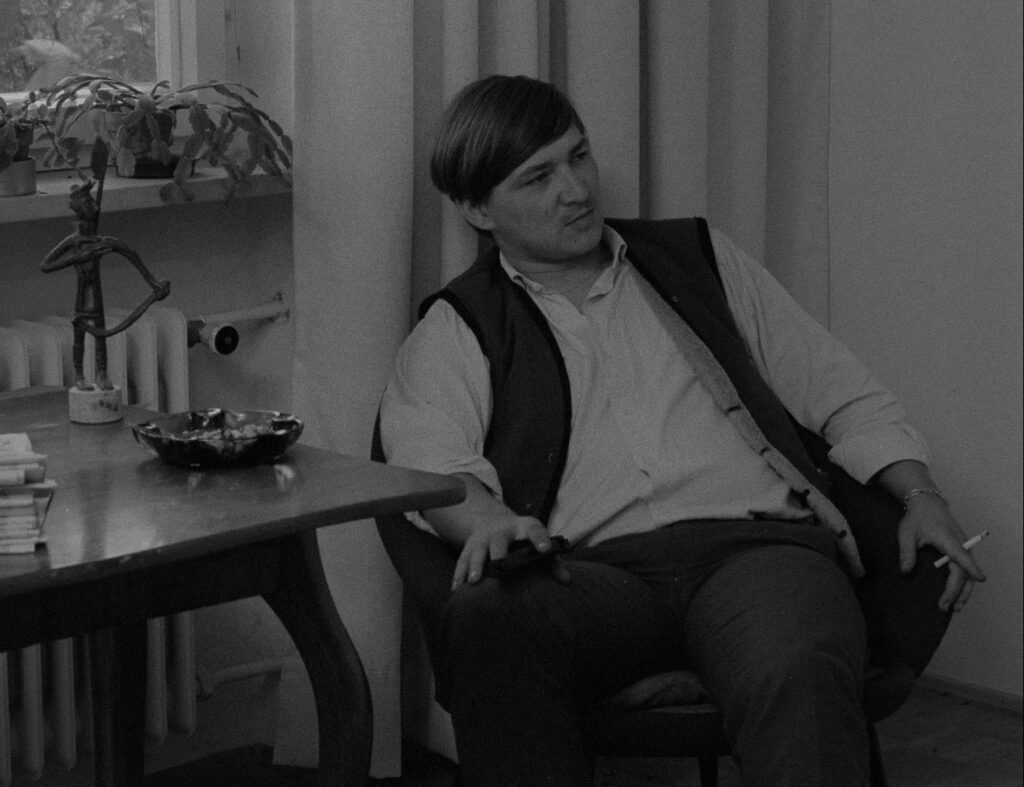
Der Bräutigam, Die Komödiantin und Der Zuhälter (The Bridegroom, The Comedienne and The Pimp) (1972) by Jean-Marie Straub and Danielle Huillet.
Thursday, November 15, 1984, 8:00 pm
The Other Side: European Avant-Garde Cinema 1960-1980
Program V: France/Italy
The Other Side surveys and celebrates 20 years of Europe’s longest and most fertile period of avant-garde filmmaking, from 1960-1980. In collaboration with the Pacific Film Archive, this 10-part series features many films never before seen in the U.S. Five of the programs will be shown at P.F.A. and the remaining five at the Cinematheque. This series was guest- curated by critic Regina Cornwall.
La Petite Fille (The Little Girl), Pascal Auger (1980). Long associated with the Paris Film Co-op, Auger engages the issue of real time and its cinematic manipulation through editing. Gestures of a child at play are edited in a manner that exaggerates the movements, transforming simple action into a seemingly arduous struggle on the screen.
Tosca, Dominique Noguez (1978). Noguez appropriates the second act of Puccini’s opera for his cinematic exploration of the static frame, “calling attention to the offscreen space in which action is implied via the use of arias from the opera.”
Der Bräutigam, Die Komödiantin und Der Zuhälter (The Bridegroom, The Comedienne and The Pimp), Jean-Marie Straub and Danielle Huillet (1968), A very young Fassbinder, champion of modern melodrama, stars in this truncated version of Bruckner’s play, The Sickness Of Youth. Divided into three parts and consisting of only 12 shots, Bridegroom… is set in Munich amidst the red-light milieu of pimps and prostitutes and is replete with abrupt melodramatic entrances and exits and a great deal of Bach.
La Verifica Incerta, Gianfranco Baruchello (1964). Baruchello, along with Alberto Grifi, subjects excerpts from several Hollywood Cinemascope films to the editing theories of Lev Kuleshov. B movie, melodrama and adventure film scenes are mixed and mismatched to generate a “kind of creative geography,” a visual topography of compressed and elongated images.